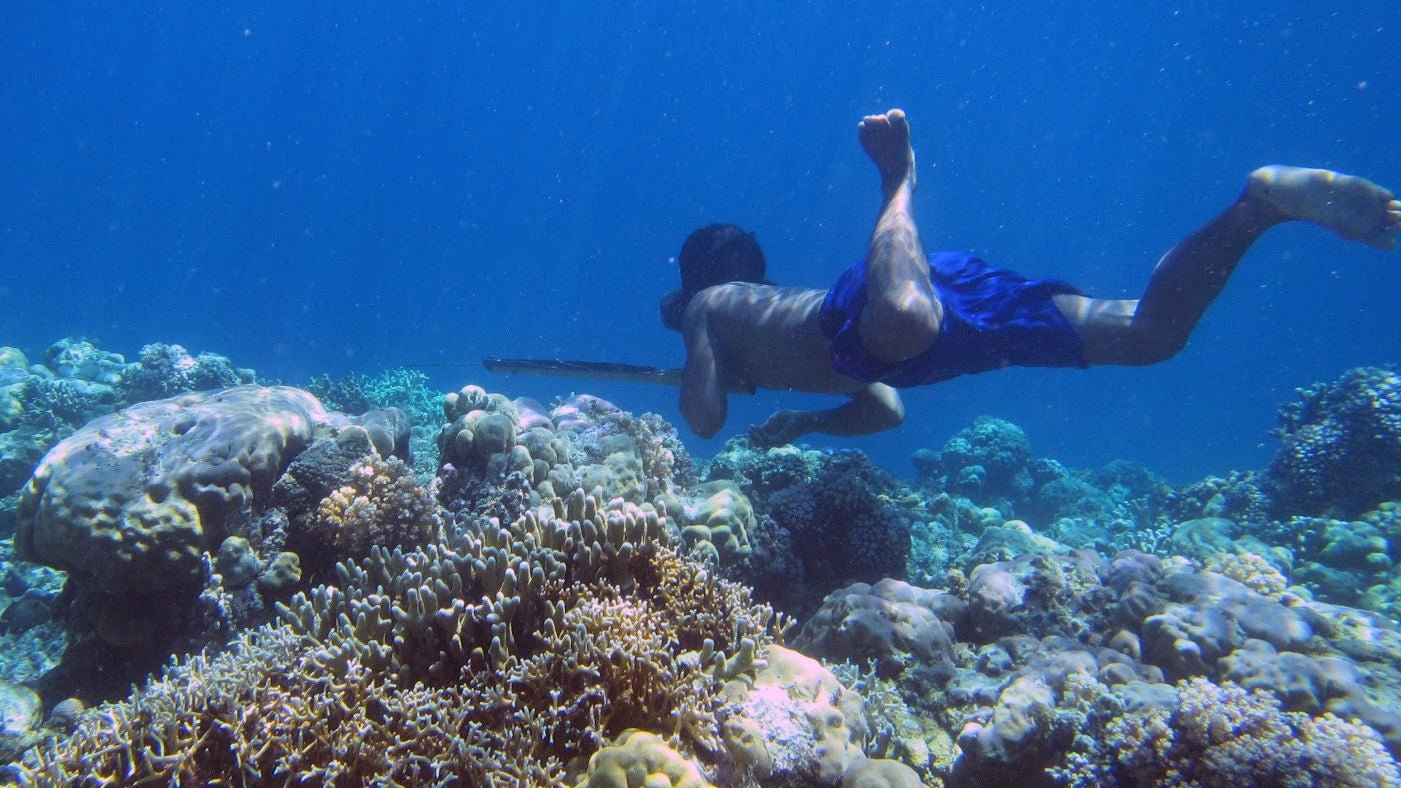How one group of Indonesians evolved to have bigger spleens
We humans are not a stagnant species.Take the Bajau (pronounced Bah-joe). They’re a group of about 5,000 people that have lived on one of Indonesia’s ‘s 17,500 islands for centuries. The Bajau they live close to the water and spend a lot of their time diving for food in the sea, a hydrophilic lifestyle that has left a genetic imprint on the population. In fact, a study published today (April 19), in the journal Cell, reports that the Bajau have evolved to have spleens that are 50% larger than those of us who spend more time on land.


We humans are not a stagnant species.Take the Bajau (pronounced Bah-joe). They’re a group of about 5,000 people that have lived on one of Indonesia’s ‘s 17,500 islands for centuries. The Bajau they live close to the water and spend a lot of their time diving for food in the sea, a hydrophilic lifestyle that has left a genetic imprint on the population. In fact, a study published today (April 19), in the journal Cell, reports that the Bajau have evolved to have spleens that are 50% larger than those of us who spend more time on land.
Like all animals with backbones, humans have a physiological reaction (paywall) that kicks in any time we’re holding our breath and have our faces fully submerged in water. Expecting to have to cope with a severe lack of air in the near future, our hearts slow down and the veins near our extremities constrict, saving oxygenated blood-supply for our brains and hearts. Then, the spleen works its magic: It contracts like a stress ball to squeeze out a reserve of red blood cells, which can usually give us between 3% and 9.5% more oxygen than normal.
As a PhD candidate studying genetics at the University of Copenhagen, in Denmark, Melissa Ilardo heard about the Bajau and was intrigued. Diving is inherently dangerous; the longer a diver holds his breath, the more at risk he is of losing consciousness and drowning. Yet Bajau reportedly can reach 70 meters (about 230 feet) at once, and there are accounts of some divers holding their breaths for 13 minutes. She wondered if they’re diving skills weren’t due to regular practice, but rather to a genetic predisposition that gave them larger spleens.
Ilardo spent months in a coastal town called Jaya Bakti, where some love the sea so much they’ve built their homes on stilts above the water. “It was really important to me that it felt like a collaborative study [with the Bajau people],” says Ilardo. She learned their language, spent time on the island, and tried her best to learn about the culture. Eventually, she found locals who were interested in her work, and wanted to learn about their own genetics.
Ilardo took saliva samples from and performed ultrasounds on 43 Bajau people and 34 Saluan people, who live on a nearby island but are predominately farmers. She found that while Saluan people had an average spleen size of about 100 cubic centimeters, Bajau spleens averaged 150 cubic centimeters—about the size of a tennis ball.
There’s no human gene specifically associated with spleen size, so next she and her team combed through Bajau genes to find any that appeared more frequently compared to Saluan and Han Chinese genes, the latter of which was available through a public database from previously conducted research. They found 25 possible genetic candidates, and honed in on one specifically that appears to amplify a thyroid hormone called T4. Mice models show that T4 partially controls spleen size, leading the team to believe that this is a genetic link to the Bajau’s physiology.
Any kind of evolution depends on who is around and healthy enough to have kids. Although we don’t face the same kind of pressures in the wild, scientists are aware that there are some circumstances where some traits have been passed down more often than others. Take being able to digest milk: People with European ancestry are more likely to be lactose-tolerant than other populations, although scientists aren’t sure why. Some people living in Tibet have evolved to tolerate higher altitudes better than the average person. And groups of native people in Greenland are genetically predisposed to produce more enzymes capable of tolerating high-fat diets.
From a medical standpoint, this particular research on the Bajau can help illustrate why some people are better at surviving in low-oxygen settings than others. For example, during surgery, there are often short periods where patients have low oxygen levels; some are able to tolerate these moments better than others, and Ilardo thinks understanding their genetics could explain why.
More importantly, Ilardo’s team’s work highlights the need to work with minority populations. “There’s incredible genetic diversity [in Indonesia], and it’s really under-characterized,” she says. People who are not white are chronically omitted from medical research, which leaves huge holes in scientific literature.